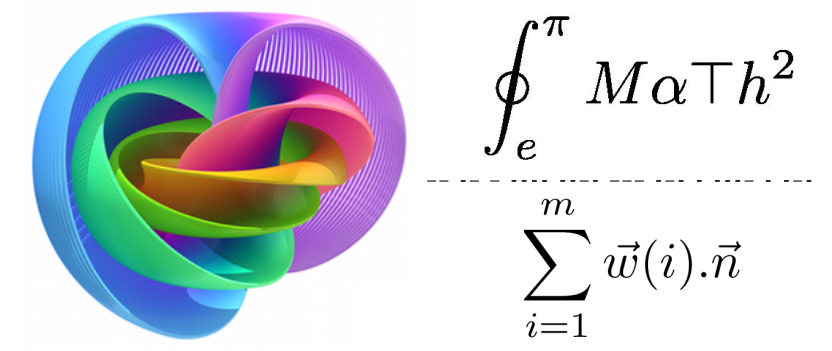What is a “big” number ? It may appears a really simple question. But answering it is very difficult because the notion of “big” depends on who answers. You will be okay with me to say that between my 10-years-old brother and a mathematician, the answer will be contrasted ; to kids, the highest number they know can be : “Thousands of billions of trillions of trillions of billions of…”. Context may influences the response : “if we think of a result of a soccer match, 5 is certainly a high number, whereas this is not the case on a school report” [1]. And if we talk in a general context ? Again, all depends on who is interrogated ; but generally, people answers “infinity” : however, this is completely false, because infinity isn’t a number. To continue this thought, let’s take the current world population figure (7.66 billion [3]). A high number, you say…
To a mathematician, many methods exists to get “big numbers” : powers (\(e^x\) for example), factorials (\(n!\)), binomial coefficients \( n \choose k \), etc. Take a chess board ; you see 64 squares distributed in 8 rows and 8 columns. According to the legend, when Sissa Ben Dahir (presumed creator) presented the chess game to the king Shirham, he was very satisfied and asked Sissa what reward he wanted ; he said “I want you to put one rice seed on the first square, then two on the second, four on the third, eight on the fourth, and so on, doubling the number of seeds at each square”. Behind this apparently simple request, you have the mechanism of powers : mathematically, each square corresponds to a power of 2 : \(2^0\), \(2^1\), \(2^2\), etc. until \(2^{63} \approx 9.22\times 10^{18}\), i.e. 10 billion of billion of rice seeds on for the 64th square (fun fact : Sissa never got what he claimed [2]). By using a simple chess board, we created a really high number, isn’t it ? With only a simple power…
But honestly, who cares about really big numbers ? What I mean is that everyone can make astronomic numbers with simple tools like powers or combination calculations* ; except for fun (or to philosophize on our insignificance), the interest is very small. So, my question should be now : “What is the biggest number that can I find in a math demonstration ?”. Well, the answer is… the Graham’s number. To have an idea of the greatness of this number, I have to explain Knuth’s up-arrow notation introduced by the mathematician of the same name in 1976.
The notation takes the power operation as a base ; if you forgot it, get a look at the reminder :
$$\forall \space a \in \mathbb{R}, n \in \mathbb{N}, a^n = \underbrace{a \times a \times a \times … \times a}_\text{n times}$$
There, \(a^n\) is written \(a\uparrow n\). For example, \(2\uparrow 13 = 2^{13} = 8192\). By this way, Knuth defined the same operation with 2 arrows :
$$a \uparrow \uparrow n = \underbrace{a \uparrow a \uparrow … \uparrow a}_\text{n times} = \underbrace{a^{a^{a^{a}}}}_\text{n powers of a}$$
And so on. Formally [4], we have (\(a \in \mathbb{Z}^*, b \in \mathbb{N}, n \in \mathbb{N}^* \)):
$$a\uparrow^{n} b = a \uparrow^{n-1}(a \uparrow^{n} (b-1))$$
Where \(\uparrow^n\) stands for the number of arrows.
Particular cases :
- \(n = 1\) : equals \(a^b\).
- \(b = 0\) : equals 1.
Examples are more comprehensive than theory :
$$3\uparrow^{3}3 = 3 \uparrow \uparrow \uparrow 3 = 3 \uparrow \uparrow (3 \uparrow \uparrow 3) = 3 \uparrow \uparrow (3 \uparrow 3 \uparrow 3) = 3 \uparrow \uparrow (3^{3^{3}}) = 3 \uparrow \uparrow 3^{27} = \underbrace{3 \uparrow … \uparrow 3}_\text{7,625,597,484,987 times}$$
We used only 3 arrows, and look at the result ! Kids will say “You generated the infinite”. Effectively, this “infinite” is so large that we can’t imagine it ; our brain isn’t prepared for this, and the Universe also as well : with \(10^{80}\) particles (estimation) only, the Universe cannot fit our number (if we write one figure per particle)!
If your brain have not blew up at this stage, that means you’re finally ready for the ultimate number.
The Graham’s number is defined by (first step at the bottom, the number is at the top) [5]:
$$\displaystyle \left.{\begin{matrix}G&=&3\underbrace {\uparrow \uparrow \cdots \cdots \cdots \cdots \cdots \uparrow } 3\\&&3\underbrace {\uparrow \uparrow \cdots \cdots \cdots \cdots \uparrow } 3\\&&\underbrace {\qquad \quad \vdots \qquad \quad } \\&&3\underbrace {\uparrow \uparrow \cdots \cdots \uparrow } 3\\&&3\uparrow \uparrow \uparrow \uparrow 3\end{matrix}}\right\}{\text{64 layers}}$$
(Your brain can now blow up)
That’s the highest useful number in mathematics ; don’t count on me to explain you its use, I prefer drop off some links if you want to know more. Fun fact : the 12 last digits are 262464195387 (I don’t know how researchers managed to find this).
Along this article, we saw “big numbers”, such as 7.66 billion (world population) ; then, chess board reconsidered that notion and learnt to us that powers can ruin a king. Then Donald Knuth showed that the entire Universe cannot fit some numbers with its “iterative powers” ; Graham used them to do a demonstration with the number that has his name. But, you know, Graham’s number is nothing compared to others numbers, themselves are nothing compared to other others numbers, and so on, infinitely…
Rayan M. (R4dium)
Notes
*Example : there’s approximately \(8.1 \times 10^{67}\) combinations of a 52-card deck (the power of factorials).
References
[1] Paolo Gangemi, Salade de mathématiques et autres gourmandises numériques, chap. 8, FIRST editions, 2010.
[2] Ibid., chap. 15
[3] From Worldometers (www.worldometers.info), October 27th, 2018 @ 6:20pm (GMT+1)
[4] Knuth’s up-arrow notation, Wikipedia
[5] Graham’s number, Wikipedia


